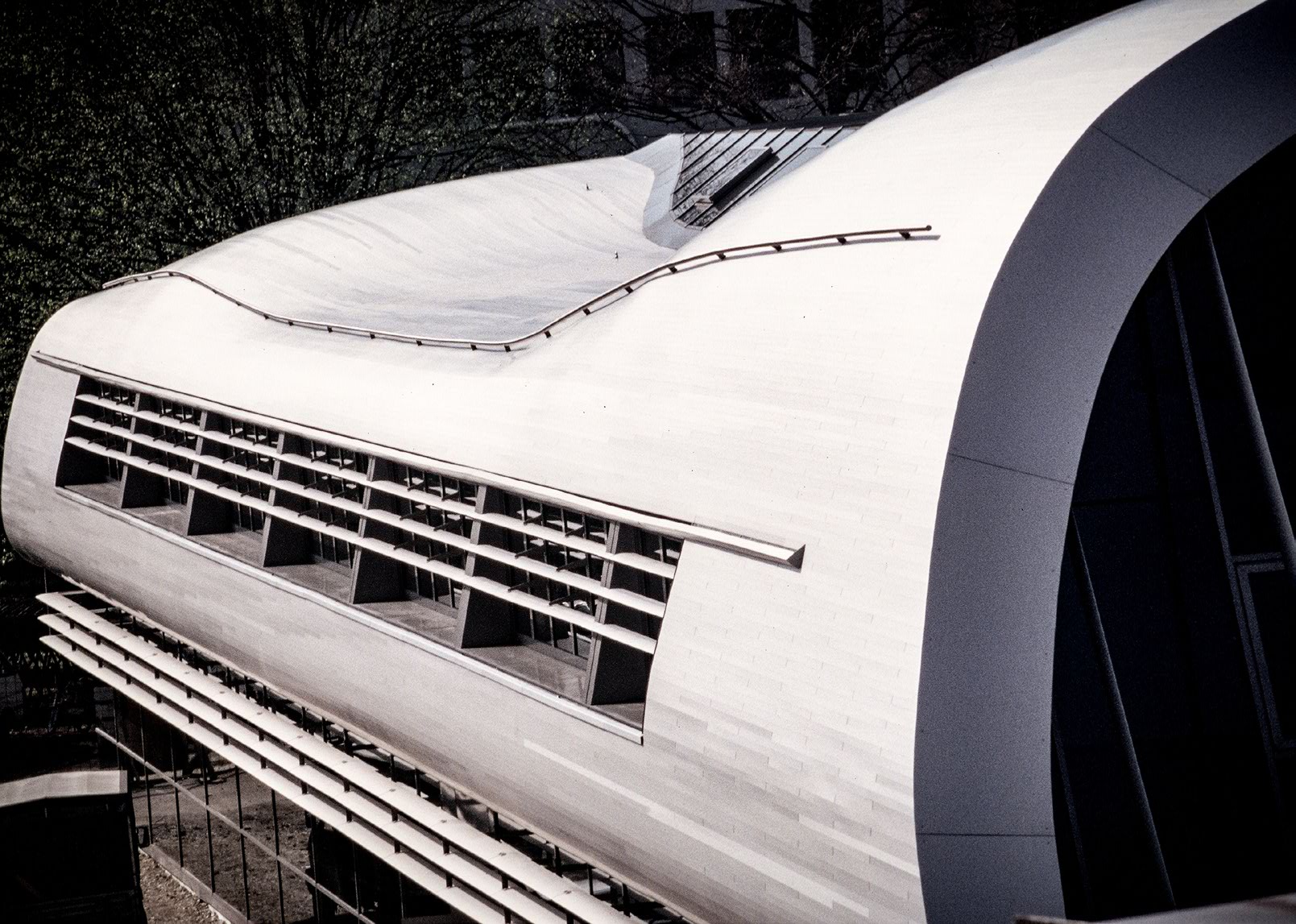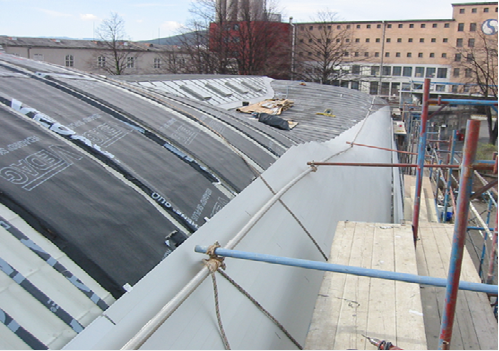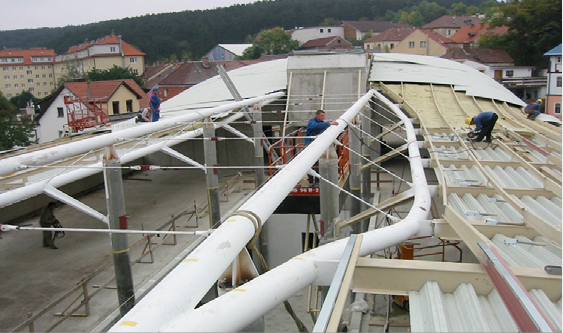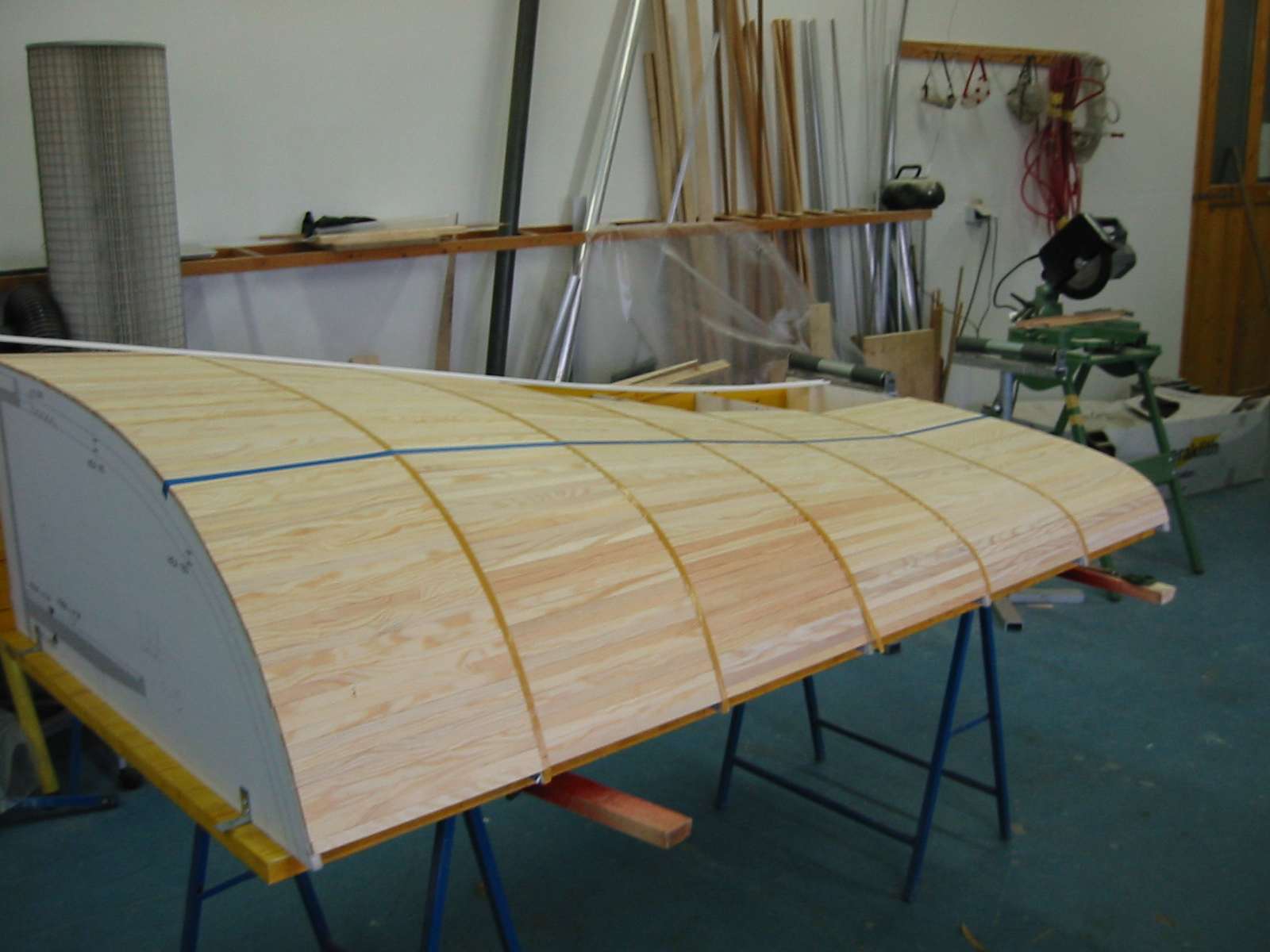



Double Curved Aluminum Roof & Facade
Structure 1999 - 2008
Research Collaboration:
Najjar & Najjar Architects
Alsphere GmbH
Funding: EUR 90,000
The internationally successful high-tech company Semperit held a competition in 1999 for the design of a new research and development centre.
Najjar & Najjar's proposal for a metallic, shimmering building "Tube" was chosen to represent the company's innovative profile.
Najjar & Najjar Architects
Alsphere GmbH
Funding: EUR 90,000
The internationally successful high-tech company Semperit held a competition in 1999 for the design of a new research and development centre.
Najjar & Najjar's proposal for a metallic, shimmering building "Tube" was chosen to represent the company's innovative profile.
The curved shape might be read as referring to the company's speciality, the forming of plastic and rubber. The laboratories on the ground floor are entirely glazed, and a sky-lit tube sits on top of them. In the centre is a hall providing access to all areas. A slanted cut-off end functions as a glazed opening towards the busy road.
The refined aluminium surface of the technoid-dynamic volume adequately suggests high production standards. In its perfectly slick appearance it seams to imitate the bodywork of a sports car. Owing to this immaculate facade, and the consequent high-quality realization from beginning to end, the project was awarded the Austrian Aluminium Award in 2002.
The refined aluminium surface of the technoid-dynamic volume adequately suggests high production standards. In its perfectly slick appearance it seams to imitate the bodywork of a sports car. Owing to this immaculate facade, and the consequent high-quality realization from beginning to end, the project was awarded the Austrian Aluminium Award in 2002.
The Pinical System for Boat Hull Construction
Theodor Eder, the inventor of the Pinical-System had already built in the 60’s, during his time as a student of technical physics in Vienna, with his friends a wooden sailing yacht. In the mid-80’s, because of emission problems, Mr. Eder began to search for alternatives to synthetic construction and developed in collaboration with an Austrian aluminium company a system of constructing hulls, using aluminium profiles. This system is linked to the principles of the construction of wooden boats. "PINICA Shiffbau" became "PINICAL".
Following the geometry of a double curved boat hull that is defined by the keel and the ribs, the wooden planks are curved, cut, and then steamed so they can be bended around the ribs. The curvature of the planks is assessed by attaching wooden strips perpendicular to the ribs. Two strips describe the required outlines that can be measured and drafted in projection to cut out the plank. This process is called amongst ship builders “spilling planks”.
We established a team for a systematic approach to the creation, analysis and process of how a double curved profile could be achieved using the same principle. The choice for aluminum as the material for cladding was evident; it is light, easy to shape, yet still very stable and completely rust-proof (which means maintenance is not required). This material is environmentally friendly, thanks to aluminum being 100% recyclable. In the end what is achieved is a cost effective, sustainable, light weight and elegant structure. Extruded profiles acting as planks with a tongue and grove connection cannot be cut. So, the idea was to bend extruded aluminum profiles into the required curved form, a special stretch-bending machine was developed, which makes the bending of individual bent profiles possible. Through this stretch-bending process, in order to minimize the spring-back effect, the profiles are stretched over the stretch-limit (the range of elastic expansion) into the materials state of plasticity. It is in this range that the aluminum is altered in shape and then bent onto a previously set curvature.
Following the geometry of a double curved boat hull that is defined by the keel and the ribs, the wooden planks are curved, cut, and then steamed so they can be bended around the ribs. The curvature of the planks is assessed by attaching wooden strips perpendicular to the ribs. Two strips describe the required outlines that can be measured and drafted in projection to cut out the plank. This process is called amongst ship builders “spilling planks”.
We established a team for a systematic approach to the creation, analysis and process of how a double curved profile could be achieved using the same principle. The choice for aluminum as the material for cladding was evident; it is light, easy to shape, yet still very stable and completely rust-proof (which means maintenance is not required). This material is environmentally friendly, thanks to aluminum being 100% recyclable. In the end what is achieved is a cost effective, sustainable, light weight and elegant structure. Extruded profiles acting as planks with a tongue and grove connection cannot be cut. So, the idea was to bend extruded aluminum profiles into the required curved form, a special stretch-bending machine was developed, which makes the bending of individual bent profiles possible. Through this stretch-bending process, in order to minimize the spring-back effect, the profiles are stretched over the stretch-limit (the range of elastic expansion) into the materials state of plasticity. It is in this range that the aluminum is altered in shape and then bent onto a previously set curvature.
© Najjar Najjar Architects. All rights reserved.

